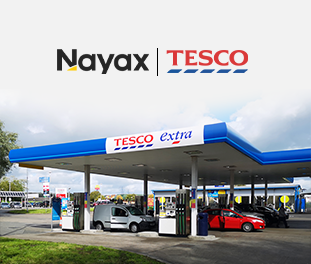
By Aaron Greenberg, CEO of CoinBridge | CSO of Nayax
The loyalty industry is at a paradoxical crossroads. On the one hand, loyalty programs are everywhere. The average U.S. consumer is enrolled in 15.5 of them! On the other hand, actual loyalty – as measured by engagement, retention, and emotional connection – is in decline. Only 55% of loyalty program members are active in those programs, and reward redemption rates are as low as 49.8%. Even in travel loyalty, once the gold standard, the situation looks bleak: 46% of hotel loyalty members and 40% of airline loyalty members say they often or always consider a competing brand, despite their accumulated rewards.
This disconnect reveals a deeper truth: traditional loyalty mechanisms are no longer enough. In a world that is increasingly interconnected and experience-led, loyalty must evolve from a rigid transaction-based system into a dynamic, frictionless engine that drives repeated engagement.
The Need for a Paradigm Shift
For decades, loyalty has been governed by a predictable, transactional formula: spend, earn, redeem in-store (or “in-brand”). 97% of programs still rely exclusively on such transaction-based rewards. But what once felt like a clever incentive now feels like the same tired, old offering. In fact, 80% of US loyalty program executives admit that their program resembles others within their industry. Redemption catalogs have become nearly indistinguishable, and lack of personalization and diversification means that rewards bear little or no resemblance to the consumer’s actual lifestyle. This degrades the effectiveness of the program as an incentive to remain loyal to a specific brand.
Moving with the Times
It’s clear that today’s consumers are not looking for yet another points program – they’re looking for relevance, recognition, and reciprocity across all their interactions with a brand. They don’t distinguish between purchases made online or offline, between shopping and socializing, or between loyalty and lifestyle – and brands should stop making these distinctions too.
Specifically, 81.2% of consumers say they’d rather shop with brands that let them customize how rewards are redeemed, and 73% say personalized rewards or experiences are important. Yet only 60% believe that current programs offer sufficient personalization – so there’s much room for improvement. What’s more, friction points – such as not being able to redeem points outside of a set catalog, and redemption that is limited to in-brand options only – are frustrating for members and undermine the performance of the loyalty program.
It’s time for brands to rethink their approach to loyalty redemption opportunities, and start to embrace diversity, freedom of choice and personalization by design. This isn’t a radical viewpoint: 91% of loyalty program executives agree that their program should offer more freedom of choice when it comes to member benefits. The question is, how to do it when the existing infrastructure of loyalty is simply not equipped to deliver.
Building Lifestyle Loyalty
The most visionary brands are already moving beyond loyalty as a standalone program. Instead, they’re building loyalty ecosystems centered around their customers’ lifestyle, that reflect how consumers live—not just how they shop.
Consider these examples:
- Delta SkyMiles – the airline has created a redemption ecosystem centered on the traveler’s lifestyle, extending its rewards from flights to coffee, concerts and cab rides, engaging consumers even when they’re not flying by adding real value to their lives.
- Marriott Bonvoy – this international hotel chain has also built a lifestyle proposition around travel, local experiences, and daily convenience, not just hotel stays.
These programs deliver better results because they ask, how can we stay relevant in a customer’s life—even when they’re not using our core service? As such, they treat loyalty not as a rewards transaction, but as an omnipresence strategy.
And that’s the key to the future: loyalty doesn’t need to be closed loop or brand exclusive. In fact, it’s most powerful when it’s open, contextual, designed for the reality of a multi-brand world, and compatible with the contemporary lifestyle of its members.



